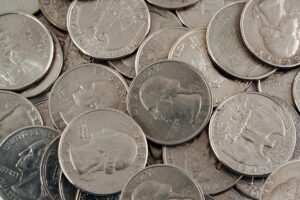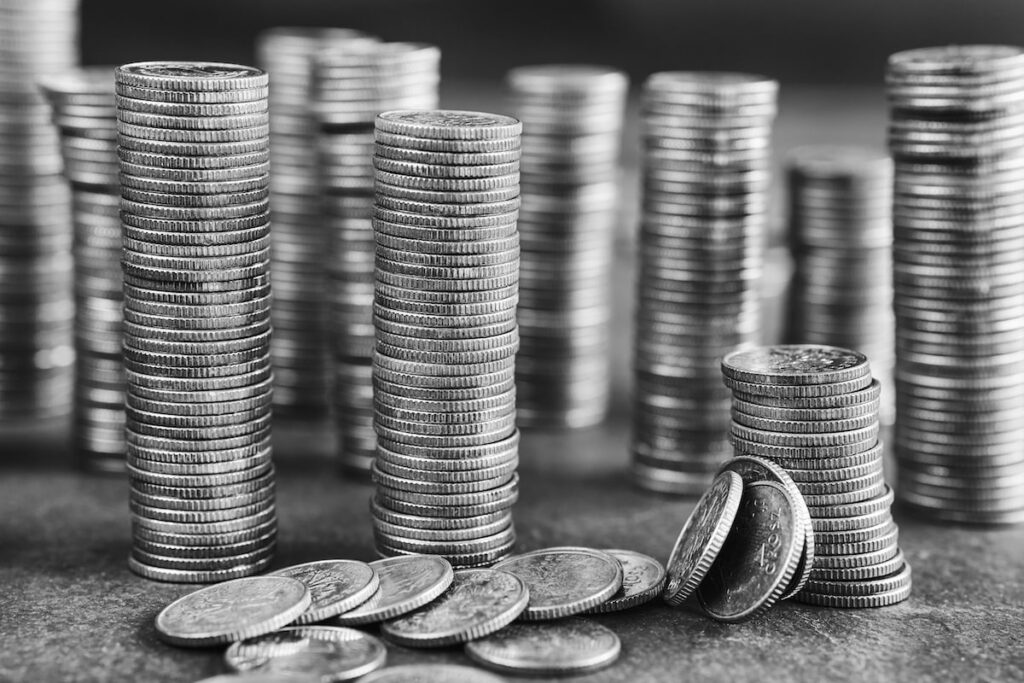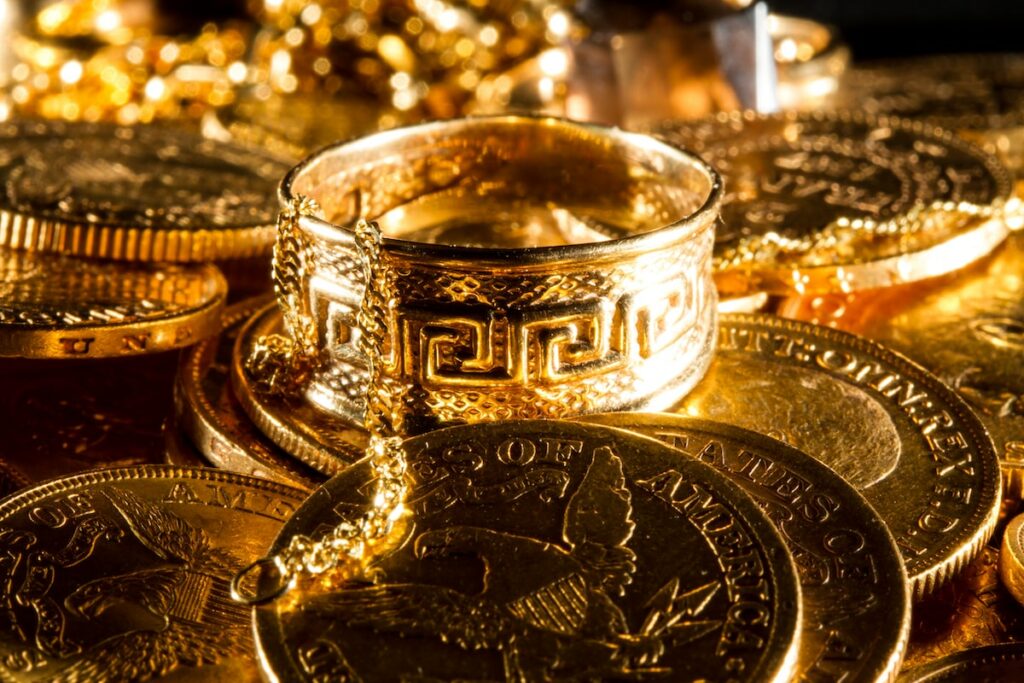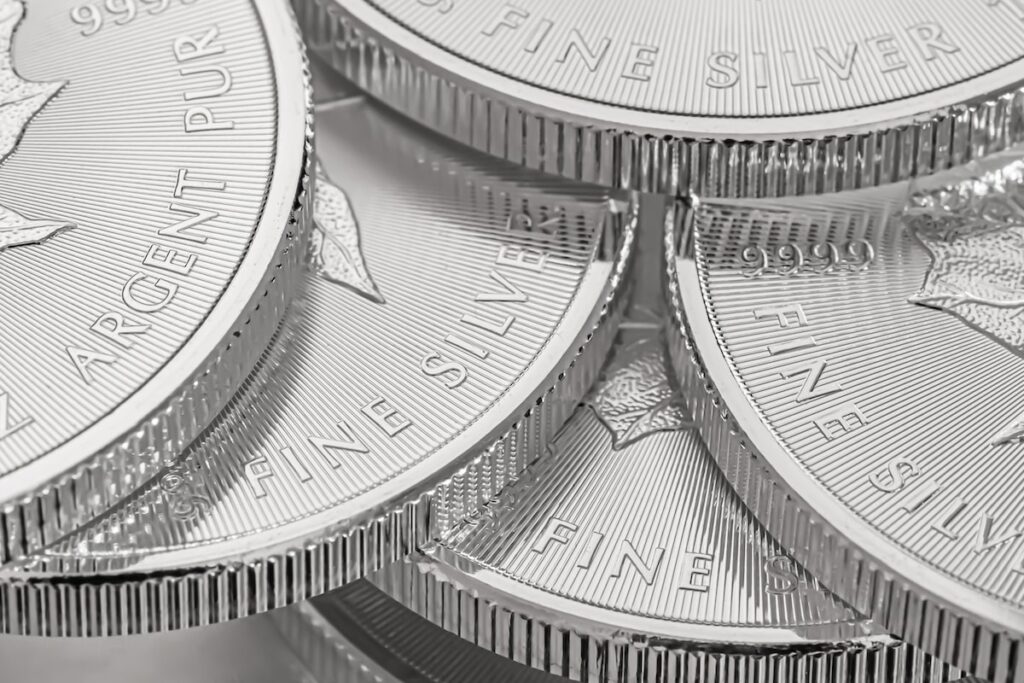In the world of precious metals, silver holds a unique allure that has captivated individuals for centuries.
Its lustrous beauty and inherent value have made it a sought-after asset, frequently traded and cherished.
Yet, as with any valuable commodity, understanding its measurements and conversion rates is crucial for seasoned collectors and novices entering the realm of silver investing.
The number of quarters in an ounce of silver varies depending on the weight of each quarter but typically ranges between 71 to 74 quarters.
Among the intriguing questions in this domain is the enigmatic relationship between silver and quarters.
How does one ascertain the number of quarters within an ounce of silver?
Unveiling this conversion rate requires a closer exploration into the intricate world of silver’s weight and its interplay with the beloved coinage.
Practical Applications: Calculating Quarters in an Ounce of Silver
For those interested in silver investing or numismatics, understanding how to calculate the number of quarters in an ounce of silver is a practical skill.
While the conversion rate can vary based on each quarter’s weight, general guidelines, and steps can be followed to arrive at an approximate estimation.
Firstly, it’s important to determine the weight of the quarters being considered.
This can be done using a precision scale measuring in grams or ounces.
Alternatively, if the weight of individual quarters is unavailable, an average weight can be used based on the standard weight of a quarter provided by the respective mint.
Once the weight of a single quarter is established, the next step is to divide the weight of an ounce of silver by the weight of a quarter.
This calculation will estimate how many quarters are needed to make up an ounce of silver.
Remember that the result will be an approximation due to potential weight discrepancies among quarters.
Here is a practical example of how one would calculate the number of quarters in an ounce of silver.
Let’s use the U.S. quarter minted before 1965 as an example, which consists of 90% silver.
The standard weight of this quarter is approximately 6.25 grams.
- Determine the weight of the quarter: We know the weight of a pre-1965 U.S. quarter is 6.25 grams.
- Identify the weight of the silver content in the quarter: Given that these quarters are 90% silver, the silver content per quarter would weigh 0.90 * 6.25 grams = 5.625 grams.
- Determine the weight of an ounce of silver: This is traditionally measured in Troy ounces, where 1 Troy ounce = 31.1 grams.
- Calculate the number of quarters in an ounce of silver: Divide the weight of a Troy ounce of silver by the weight of the silver content in a quarter. This gives 31.1 grams / 5.625 grams = ~5.52.
So, there are approximately 5.52 pre-1965 U.S. quarters in a Troy ounce of silver.
This is an approximation and can vary due to potential weight discrepancies among individual quarters.
Now, this is a table that compares pre-1965 quarters (90% silver, 10% copper) with post-1965 quarters (8.33% nickel, balance copper).
We will consider the weight of an ounce (Troy ounce) of silver to be 31.1 grams.
| Quarter Type | Year | Material Composition | Weight (g) | Silver Content (g) | Quarters in an Ounce of Silver |
| U.S. Quarter | Pre-1965 | 90% Silver, 10% Copper | 6.25 | 5.625 (~90%) | ~5.52 |
| U.S. Quarter | Post-1965 | 8.33% Nickel, Balance Copper | 5.67 | 0 (No Silver) | Undefined |
Note: The number of quarters per ounce of silver is calculated by dividing the weight of a Troy ounce of silver (31.1 grams) by the weight of the silver content in the quarter. For quarters minted after 1965, which contain no silver, the result is undefined.
Note that U.S. quarters minted prior to 1965 are made of 90% silver and weigh approximately 6.25 grams.
After 1965, quarters contain no silver.
| Ounces of Silver | Grams of Silver | No. of Pre-1965 Quarters |
| 1 | 31.1 | 5.52 |
| 2 | 62.2 | 11.04 |
| 3 | 93.3 | 16.56 |
| 4 | 124.4 | 22.08 |
| 5 | 155.5 | 27.60 |
| 6 | 186.6 | 33.12 |
| 7 | 217.7 | 38.64 |
| 8 | 248.8 | 44.16 |
| 9 | 279.9 | 49.68 |
| 10 | 311.0 | 55.20 |
The number of quarters is not rounded to a whole number since in practice, it’s not possible to have a fraction of a quarter.
However, for the purpose of this calculation, it helps to show the conversion factor.
By following these practical steps, individuals can better understand the conversion rate between quarters and silver, enabling them to make informed decisions regarding investing, collecting, or valuing their silver holdings.
Exploring the Quarters: A Popular Coinage in Circulation
Quarters, a widely recognized denomination of currency, hold a special place in the hearts and pockets of many.
These small, circular coins are integral to daily transactions, often used for purchases or as a change in various economies worldwide.
The popularity of quarters can be attributed to their convenient size, making them easily manageable for consumers and businesses.
With their distinctive design, typically featuring the profile of a prominent figure on one side and a unique motif on the reverse, quarters have become a means of exchange and a collectible item for numismatists.
In the United States, the most recognizable quarter is the one issued by the U.S. Mint, bearing the portrait of George Washington, the first President of the United States.
However, other countries also have quarter equivalents, reflecting their cultural heritage and historical figures.
While quarters are predominantly associated with currency, their role extends beyond mere transactional use.
Collectors and enthusiasts appreciate the artistic designs, unique editions, and limited releases that make each quarter distinct.
This enthusiasm for collecting quarters has created a vibrant numismatic community where enthusiasts eagerly seek out rare or special edition coins to add to their prized collections.
As a result, the demand for quarters, both for their face value and as collectibles, remains high, ensuring their continuous circulation and relevance in the ever-evolving world of currency.
The Weight Discrepancy: Varied Quarters and Their Impact on Conversion
A crucial factor in determining the number of quarters in an ounce of silver is the weight discrepancy among the quarters.
While quarters generally have a standard weight, slight variations can occur due to manufacturing processes, wear and tear, or even intentional alterations.
These variations in weight can have a significant impact on the conversion rate between quarters and silver.
The United States Mint, for instance, specifies that a standard quarter should weigh approximately 5.67 grams.
However, individual quarters may lose weight over time due to abrasion or corrosion.
This weight loss can affect the number of quarters needed to reach an ounce of silver.
Furthermore, introducing commemorative or special edition quarters with different designs and materials can further complicate the conversion process, as these coins may have different weights than the standard quarter.
To accurately determine the conversion rate between quarters and silver, it is essential to consider the weight of the specific quarters being considered.
Precise measurements and calculations become crucial when dealing with significant quantities of silver, especially for investors or collectors who rely on accurate valuations.
Therefore, understanding the potential weight discrepancy among quarters and its impact on conversion becomes essential to unraveling the intricate relationship between these coins and silver.
Tips and Tricks: Simplifying the Quarters-to-Silver Conversion Process
Converting quarters to silver can sometimes be a complex task, especially considering the variations in weight and the intricacies of the silver market.
However, several tips and tricks can simplify the conversion process and help individuals navigate this endeavor more efficiently.
Here are some valuable suggestions to consider:
- Research Standard Weights: Familiarize yourself with the standard weight of the quarters you work with. Understanding the average weight of a quarter will provide a baseline for your calculations.
- Utilize Precision Scales: Invest in a precision scale that can accurately measure the weight of individual quarters. This will allow you to have precise data for your conversion calculations.
- Determine the Silver Purity: Different silver items may have varying purity levels. Knowing the purity of the silver you are dealing with is crucial, as it directly affects the conversion rate. Research the silver’s purity and adjust your calculations accordingly.
- Consider Weight Averages: If you are working with many quarters, weighing each coin may not be practical. Instead, determine an average weight based on a representative sample, and use that average to estimate the number of quarters in an ounce of silver.
- Use Conversion Tools: Take advantage of online conversion calculators or mobile apps designed specifically for converting silver measurements. These tools can streamline the process and provide quick and accurate results.
- Seek Expert Advice: If you are new to silver investing or facing complexities in the conversion process, consider consulting with experts or experienced collectors who can provide guidance and insights based on their knowledge and expertise.
- Stay Updated with Market Trends: Keep yourself informed about the latest market trends, including fluctuations in silver prices and any changes in conversion rates. Staying abreast of market developments will help you make more informed decisions and adapt your strategies accordingly.
By incorporating these tips and tricks into your approach, you can simplify the quarters-to-silver conversion process, save time, and make more accurate assessments of your silver holdings.
Remember, practice and experience will further enhance your proficiency in converting quarters to silver effectively.




